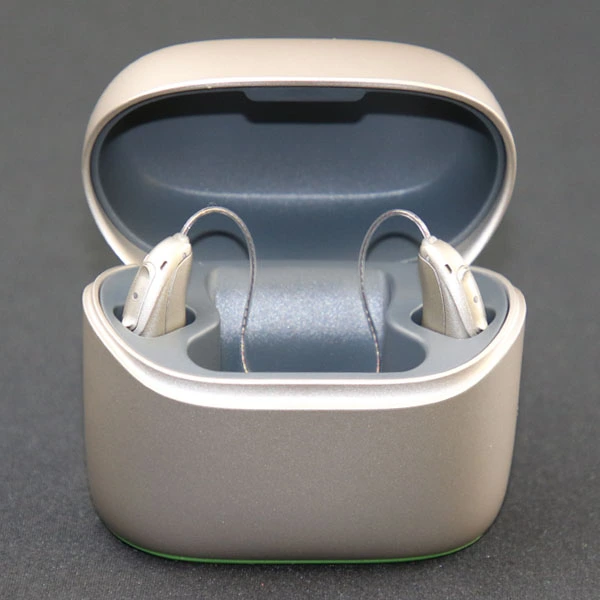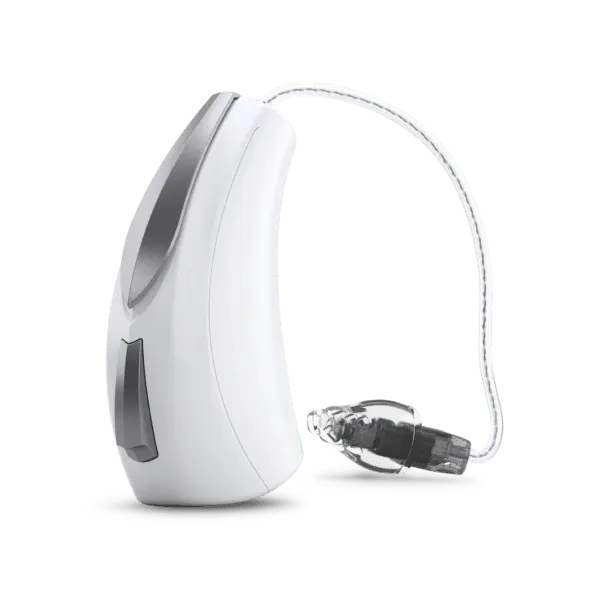Making the Switch: A Guide to Rechargeable Hearing Aids

Advancements in rechargeable hearing aids offer users a convenient and cost-effective solution. Rechargeable batteries have become increasingly popular for their longevity and ease of use. Say goodbye to the days of frequent battery replacements and embrace a more sustainable and user-friendly option.
Understand more about hearing health.
Choosing the Best Rechargeable Hearing Aids
Choosing hearing aids with rechargeable batteries offers multiple advantages that go beyond simple convenience. These benefits span from long-lasting performance to environmental sustainability.
- Long-Lasting: Rechargeable batteries offer years of service when well-maintained, providing significant cost savings. A single charge keeps your hearing aids functional for up to 30 hours, ensuring an uninterrupted experience.
- Environmentally Friendly: Opt for reusable batteries to minimize your environmental impact. By doing so, you cut down on waste, make fewer purchases, and lower your overall carbon footprint.
- Easy to Use: These batteries offer a user-friendly experience. They are handy for individuals with dexterity issues, eliminating the hassle of frequent, small battery replacements.
- Energy Efficiency: Enjoy a full day of reliable power as one charge lasts up to 19 hours, allowing for consistent use throughout your day.
- Cost Savings: Say goodbye to the recurring costs of disposable batteries. Investing in rechargeable options offers financial benefits over time.
- Greater Accessibility: Rechargeable hearing aids offer the convenience of easy overnight charging, making them an excellent choice for older users.
- Eco-Friendly: Unlike disposables that end up in landfills, these rechargeable batteries are a sustainable alternative, promoting environmental well-being.
From their lasting performance to their eco-friendly nature, rechargeable batteries are an efficient and responsible choice for powering your hearing aids.
Are you worried about costs? Explore how the best rechargeable hearing aids can also be affordable hearing aids.

Options For Charging Hearing Aids with Rechargeable Batteries
To ensure your hearing aids remain powered, multiple charging solutions are available to meet different lifestyle needs.
- Desktop Charger: This traditional method requires plugging the charger into a wall outlet. Leave your hearing aids overnight to receive a full charge, ensuring day-long functionality.
- Smart Charger: Offering more control, the smart charger pairs with a smartphone app. This allows you to monitor battery levels and make real-time charging adjustments for optimal performance.
- Portable Charger: Ideal for individuals who are often on the move, the portable charger allows for flexible charging options. Use a power bank or USB port to recharge your hearing aids conveniently.
Whether you prioritize convenience, control, or flexibility, there’s a charging option that fits your needs, keeping your hearing aids operational when you need them most.
Battery Lifespan
When it comes to the longevity of your rechargeable batteries, you can generally expect a lifespan ranging from 3 to 5 years. This duration largely depends on how frequently you use the hearing aids and your charging habits. To maximize the life of your batteries, it’s crucial to adhere to the manufacturer’s guidelines for charging and maintenance. By following these best practices, you ensure that your investment provides reliable service for an extended period.
Maintaining Rechargeable Hearing Aids
Proper care is essential for the longevity and effectiveness of your hearing aid batteries, whether they are Lithium-Ion or silver zinc.
For those with Lithium-Ion batteries, it’s best to keep your hearing aids in a plugged-in charging station when you’re not using them. This ensures they remain fully charged and ready for use. On the other hand, avoid storing them in an unplugged station, as this can deplete the battery life over time.
Silver-zinc batteries also require specific care. Unlike Lithium-Ion batteries, it’s okay to place your hearing aids in the charging station even if they are not fully drained. However, similar to Lithium-Ion batteries, storing them in an unplugged station can harm their longevity.
By following these maintenance tips, you can extend the life of your hearing aids with rechargeable batteries, ensuring consistent and reliable performance.
Discover more about hearing aid maintenance.

Elevate Your Hearing Experience: Make the Switch Today
Switching to rechargeable hearing aids offers you an array of advantages. Enjoy significant cost savings by eliminating the need for frequent battery replacements. Contribute to environmental sustainability with less waste and a reduced carbon footprint. Plus, choose from a variety of charging options to match your lifestyle perfectly. Experience the freedom and reliability that hearing aids with rechargeable batteries bring.
Don’t wait to improve your hearing and lifestyle. Contact Stanford Hearing today to make the transition to rechargeable hearing aids.
